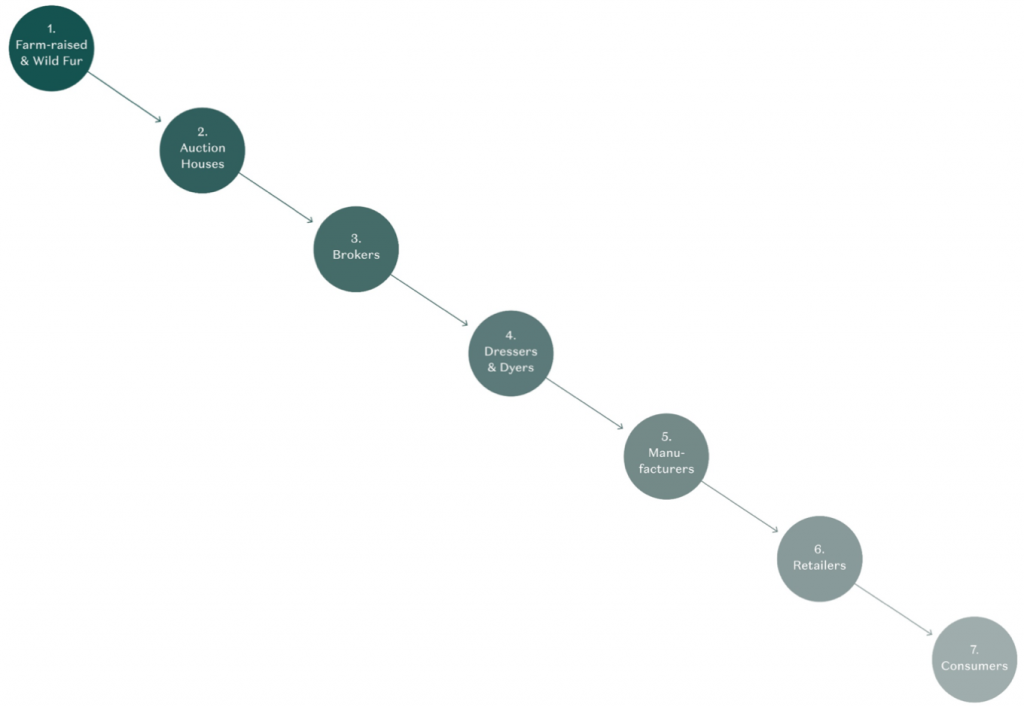The fur trade is truly international and includes producers, international traders, dressers and dyers, manufacturers, designers, wholesalers, and retailers.
The diagram below is represents the international fur supply chain and indicates where major economic centres are located. The majority of exporting fur farms are located in Europe and North America and wild fur is produced in North America and Russia.
Around 2/3rd of fur pelts are sold through international auction houses. These auctions take place several times a year and are attended by a global audience of buyers and brokers. They may be buying for themselves or on behalf of their clients. Major trading centres are found in London and Hong Kong.
The auction houses play a vital role in the supply chain. Trained experts sort the pelts into “auction lots”: bundles of pelts that are consistent in quality and colour. In knowing the provenance of every pelt, auction houses also provide an important stage in traceability and assurance of good welfare standards on farms.
The raw pelts are sent by the auction houses or buyers to dressers and dyers to be treated. Most dressing and dyeing facilities are based in Baltic States, Canada, China, France Germany, Greece, Hong Kong, and Italy. The skins are softened and preserved using a variety of tanning techniques and some chemicals, exactly as with leather, although the chemicals used for fur tend to be gentler as obviously the fur is not stripped from the skin. All chemicals used are governed by regulations and legislation and are safe for use in clothing.
The treated pelts are then sent to manufacturers to be made up into fur garments, accessories, or home furnishings. Largest manufacturing centres are found in China, Italy, Turkey, and Greece. Working with fur is a skill; artisans learn a mixture of traditional and modern techniques for hand cutting, stranding, and sewing fur.

